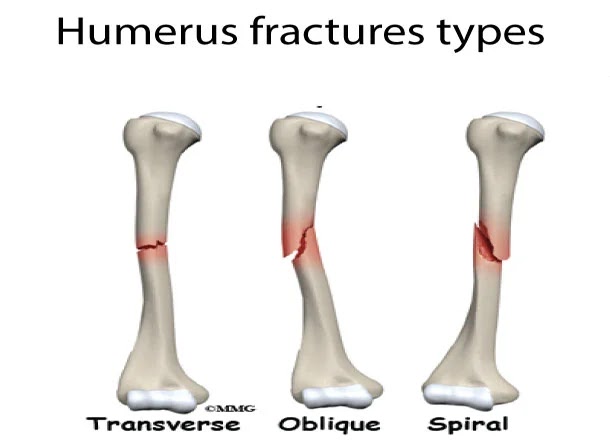Humerus fractures types
Humerus fracture
A humerus fracture is the scientific name for breaking the bone in your upper arm (your humerus). Humerus fractures are normally as a result of traumas like vehicle accidents or falls.
If you destroy your humerus, you may need surgical procedure to repair your bone. Some people can get better without surgical operation and handiest want a splint or sling. You’ll need Physical therapy to return your power to transport your arm.
Types of fractures
Your healthcare company will assign your fracture a kind or classification relying on how your humerus is broken. Some fractures are categorised by way of the form or sample of the destroy line:
1) Transverse fracture.
2) Oblique fracture.
3) Spiral fracture.
4) Segmental fracture.
5) Comminuted fracture.
6) Impacted fracture.
7) Buckle fracture.
8) Hairline fracture.
9) Stress fracture.
10) Avulsion fracture.
Supracondylar humerus fractures
If you smash your humerus proper above your elbow, you would possibly have what’s referred to as a supracondylar fracture. This is a type of humerus fracture that nearly constantly impact kids. Supracondylar humerus fractures are usually resulting from a child catching themselves from a fall with their arm stretched out in the front of them. Your provider will diagnose and treat a supracondylar fracture like another broken bone.
Open vs. Closed fractures
Your Doctor will classify your fracture as both open or closed. If you have an open fracture your bone breaks thru your pores and skin. Open fractures typically take longer to heal and feature an increased threat of infections and other headaches. Closed fractures are nevertheless extreme, however your bone doesn’t push through your skin.
Displaced humerus fractures
Displaced or non-displaced are extra phrases your provider will use to describe your fracture. A displaced fracture means the portions of your bone moved a lot that a gap formed across the fracture when your bone broke. Non-displaced fractures are still broken bones, however the portions weren’t moved a long way sufficient at some stage in the wreck to be out of alignment. Displaced fractures are more likely to require surgical operation to repair.
Humerus fracture places and anatomy
Your provider might reference where to your humerus you skilled a fracture. There are plenty of phrases providers use to talk approximately unique bones, but the most not unusual ones you’ll pay attention are:
Location (proximal and distal):
Proximal and distal are phrases that describe in which a fracture is positioned along your bone’s duration. The proximal give up of your humerus is the top. The distal give up is the bottom. So, if you have a proximal humerus fracture, your higher arm bone is damaged near its pinnacle — the cease that connects in your shoulder. Similarly, if you have a distal humerus fracture which means your bone is broken at the lowest, towards your elbow.
Anatomy (elements of your bones):
Even though your bones are one piece, they have got many components that may be broken all through a fracture. Your humerus has a head (your proximal issue, near your shoulder), shaft and distal issue (the cease at the lowest, near your elbow). Other not unusual labels just like the surgical neck and extra tuberosity are just specific areas for your bone. These terms are typically greater in your healthcare provider to apply as they describe in which your bone is broken.












No comments:
Post a Comment